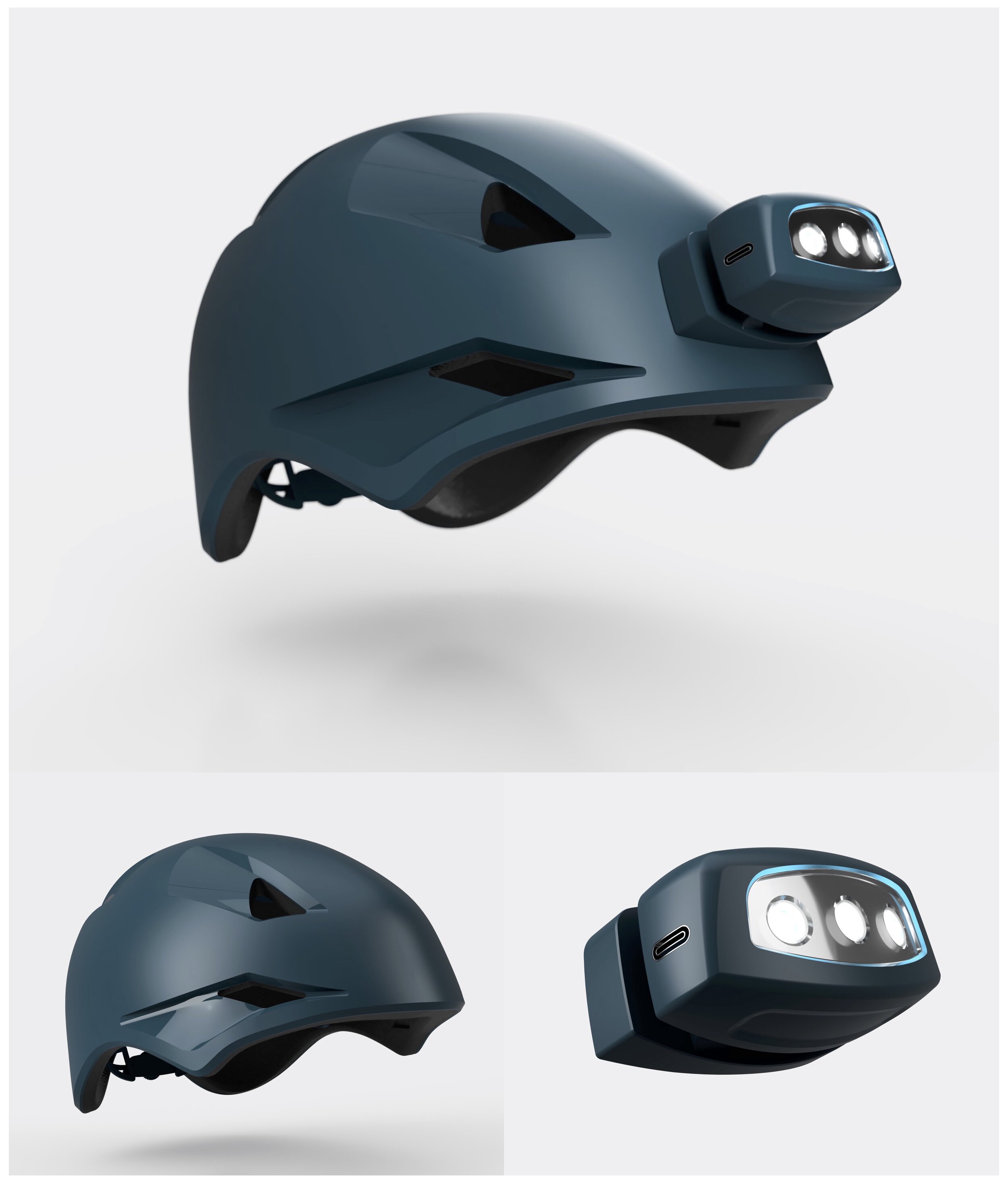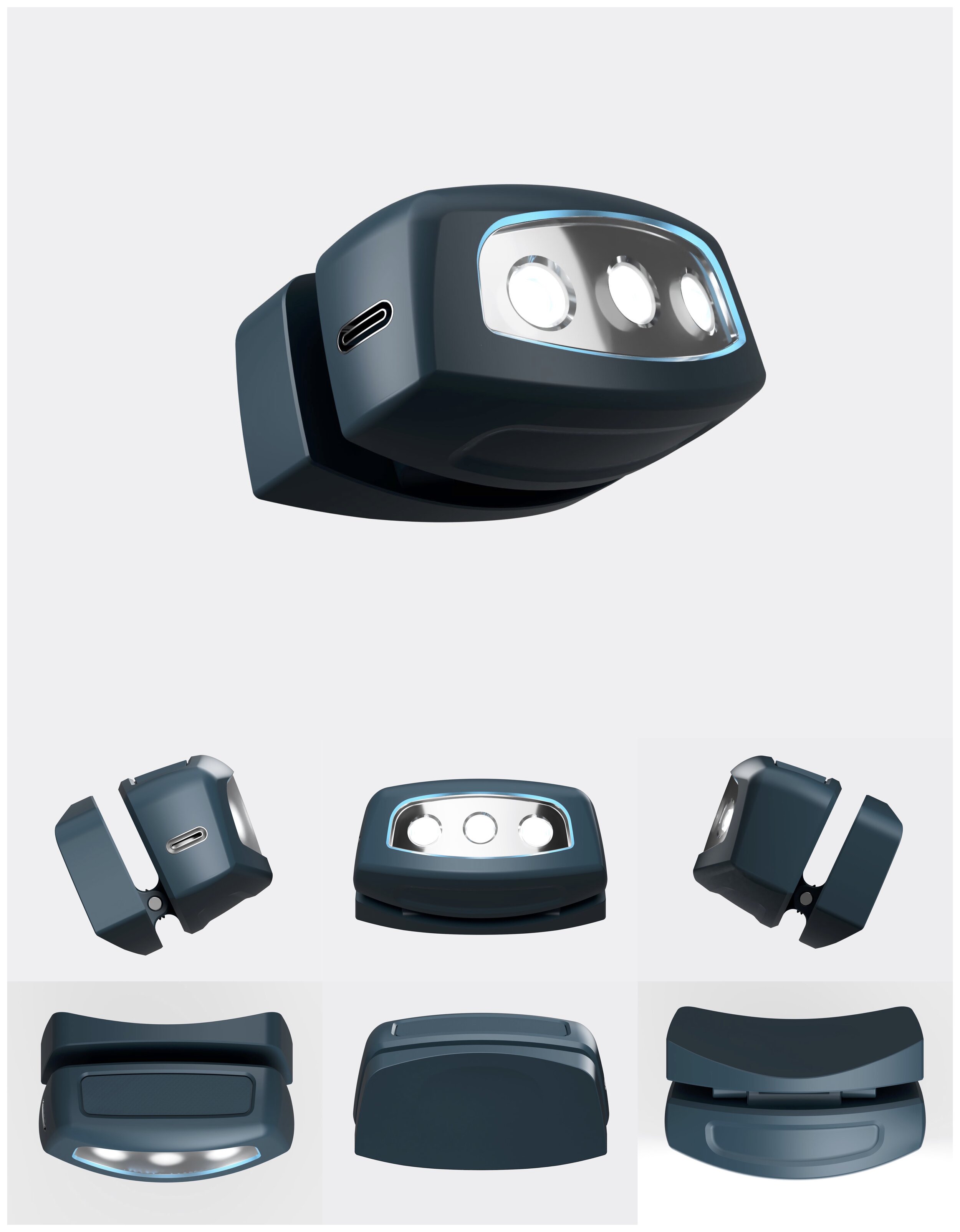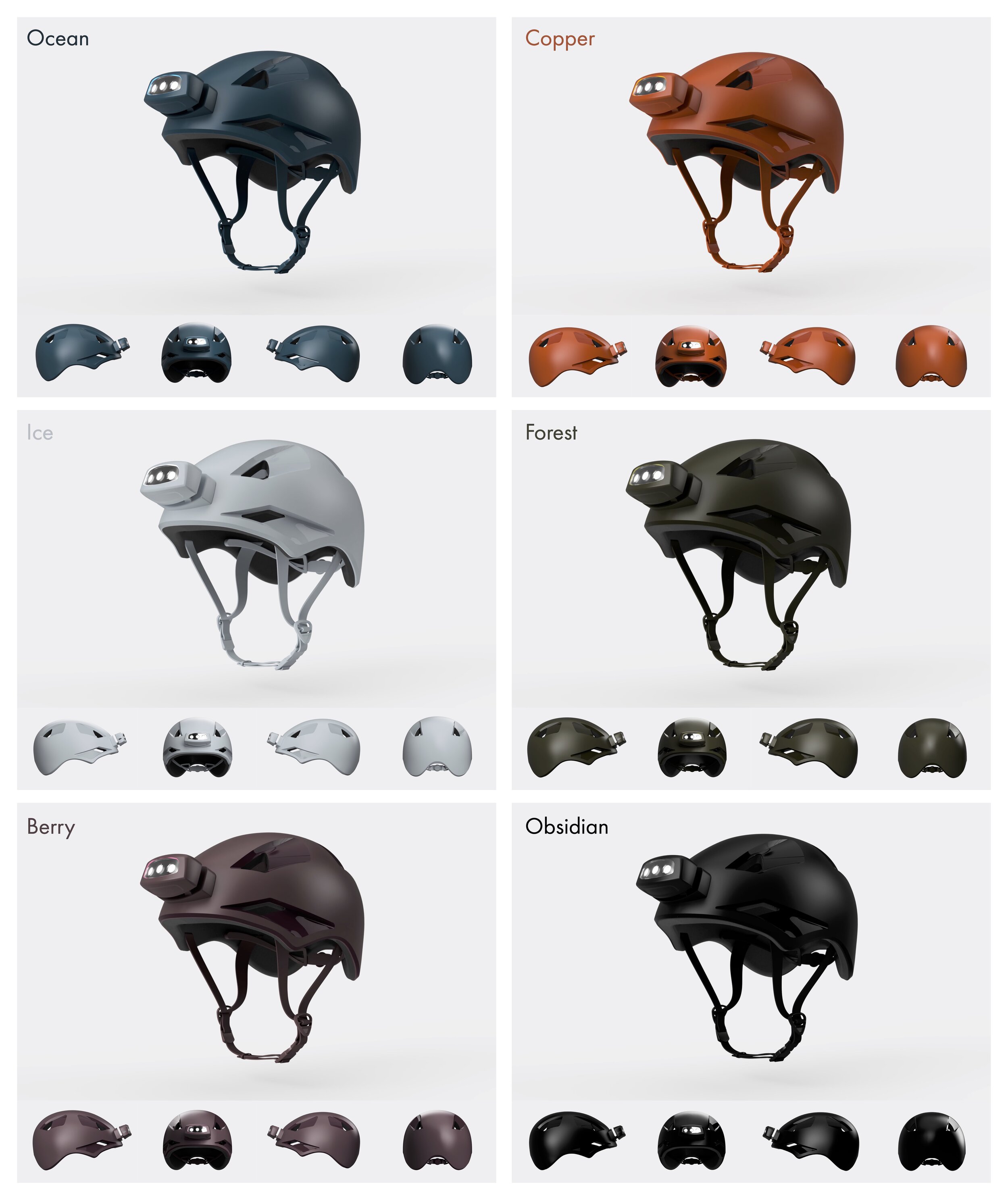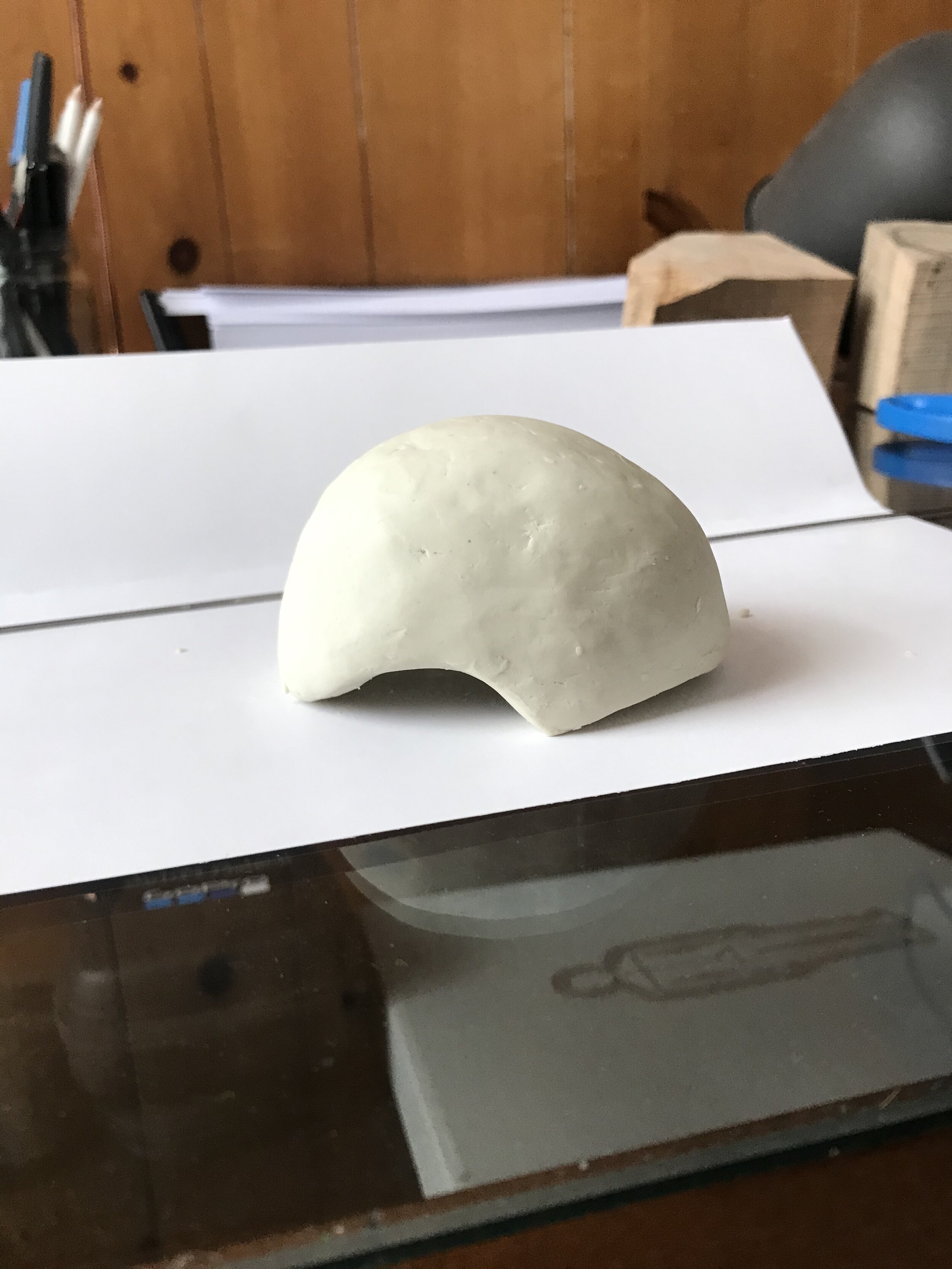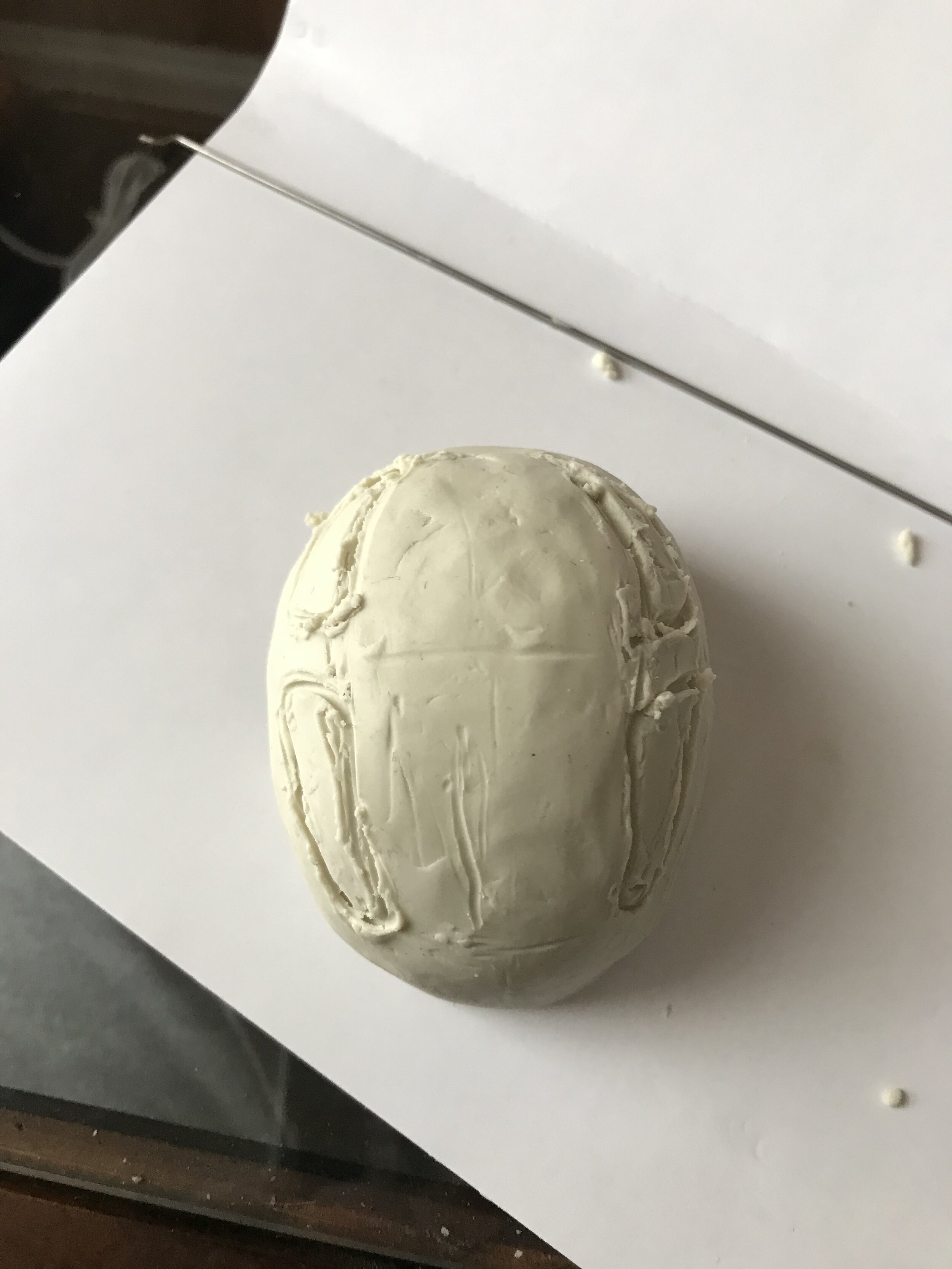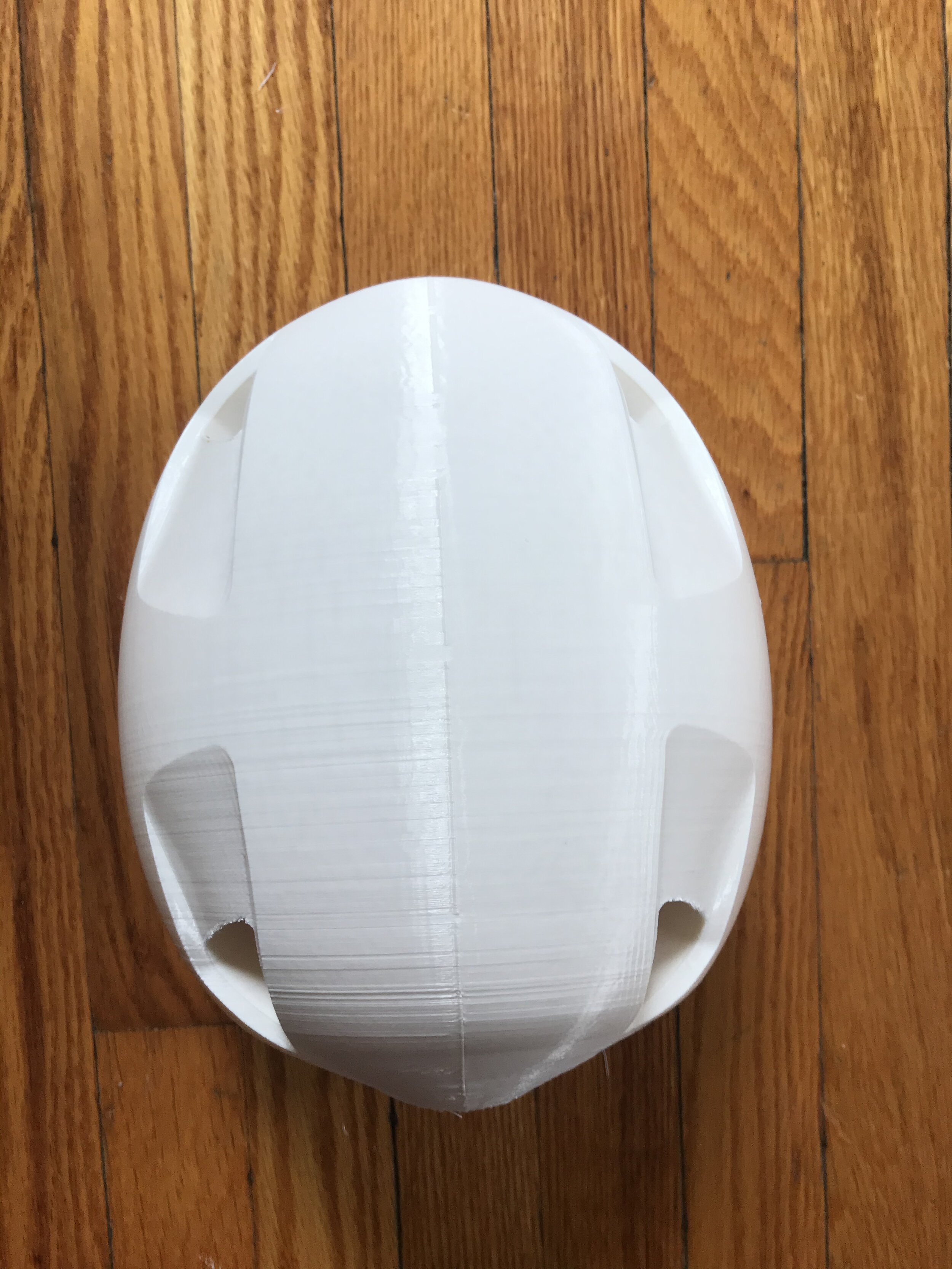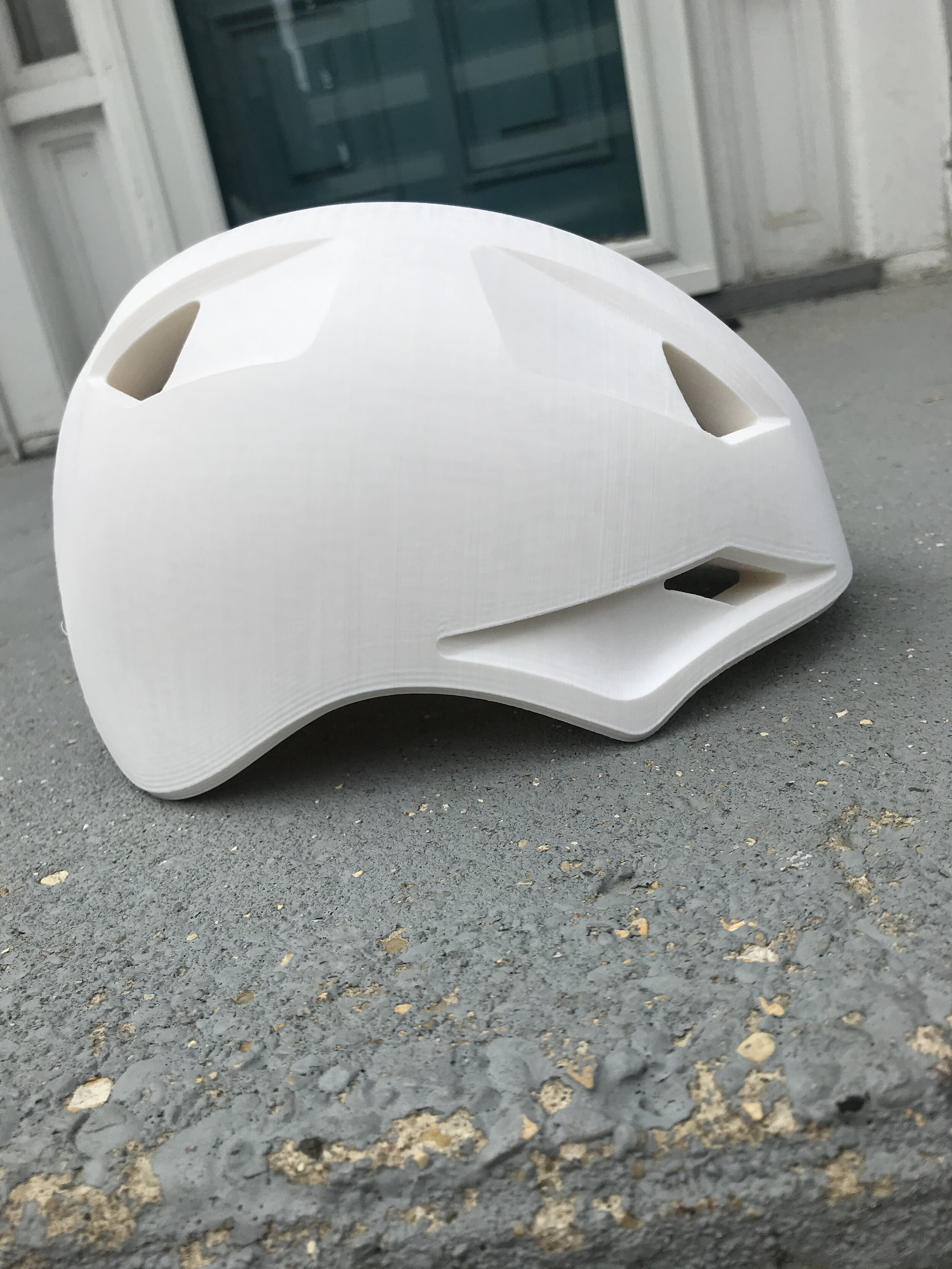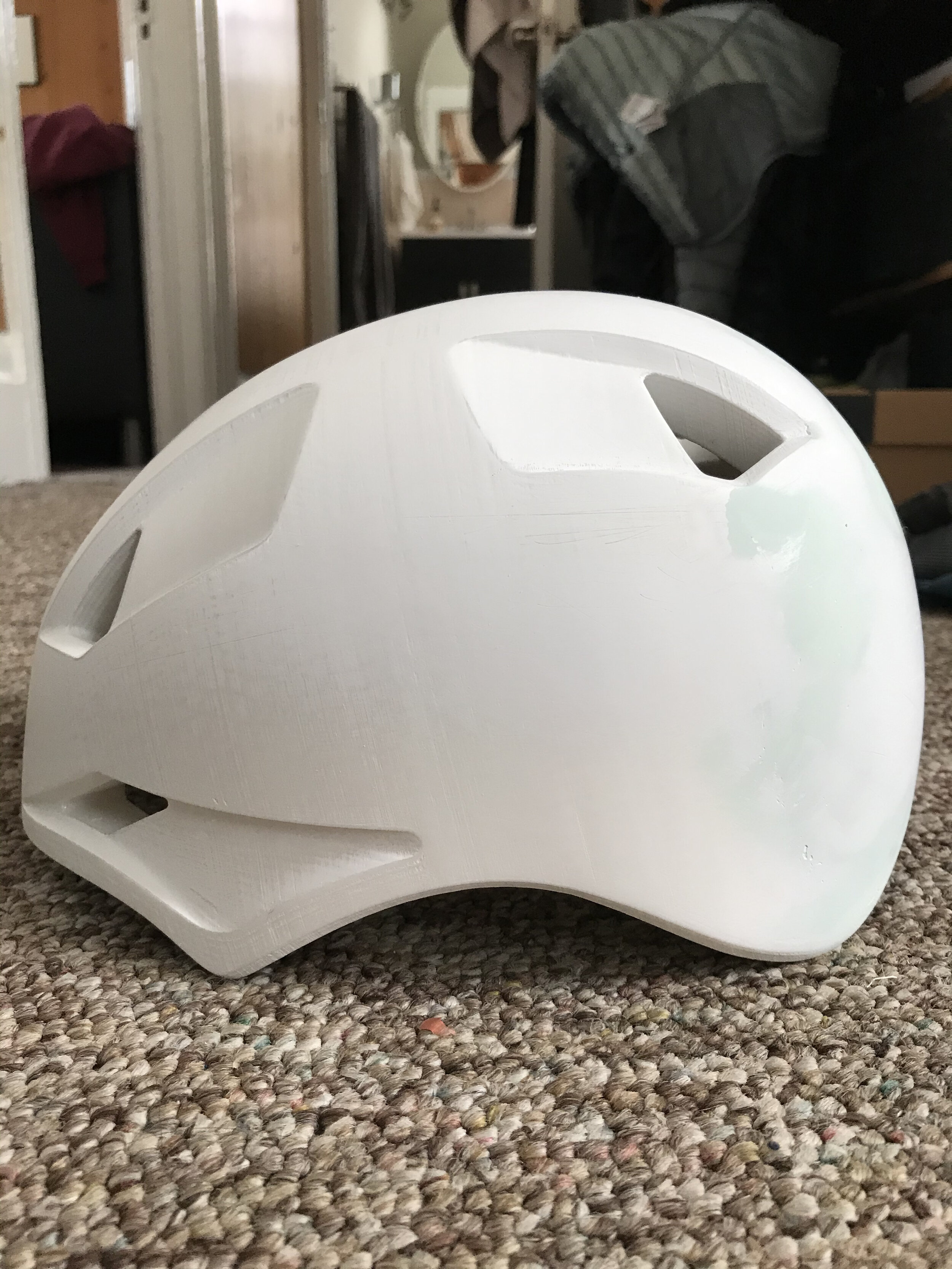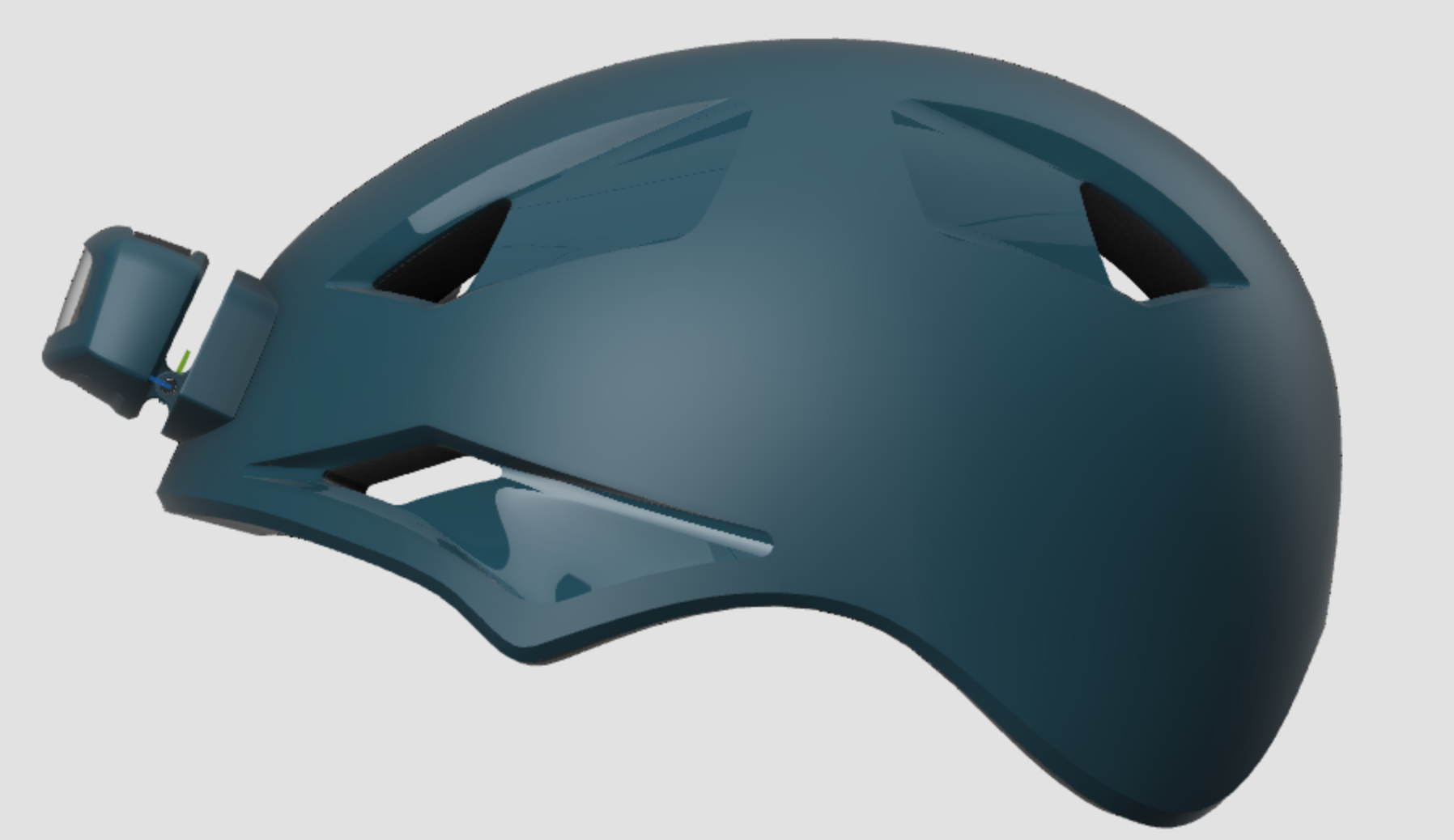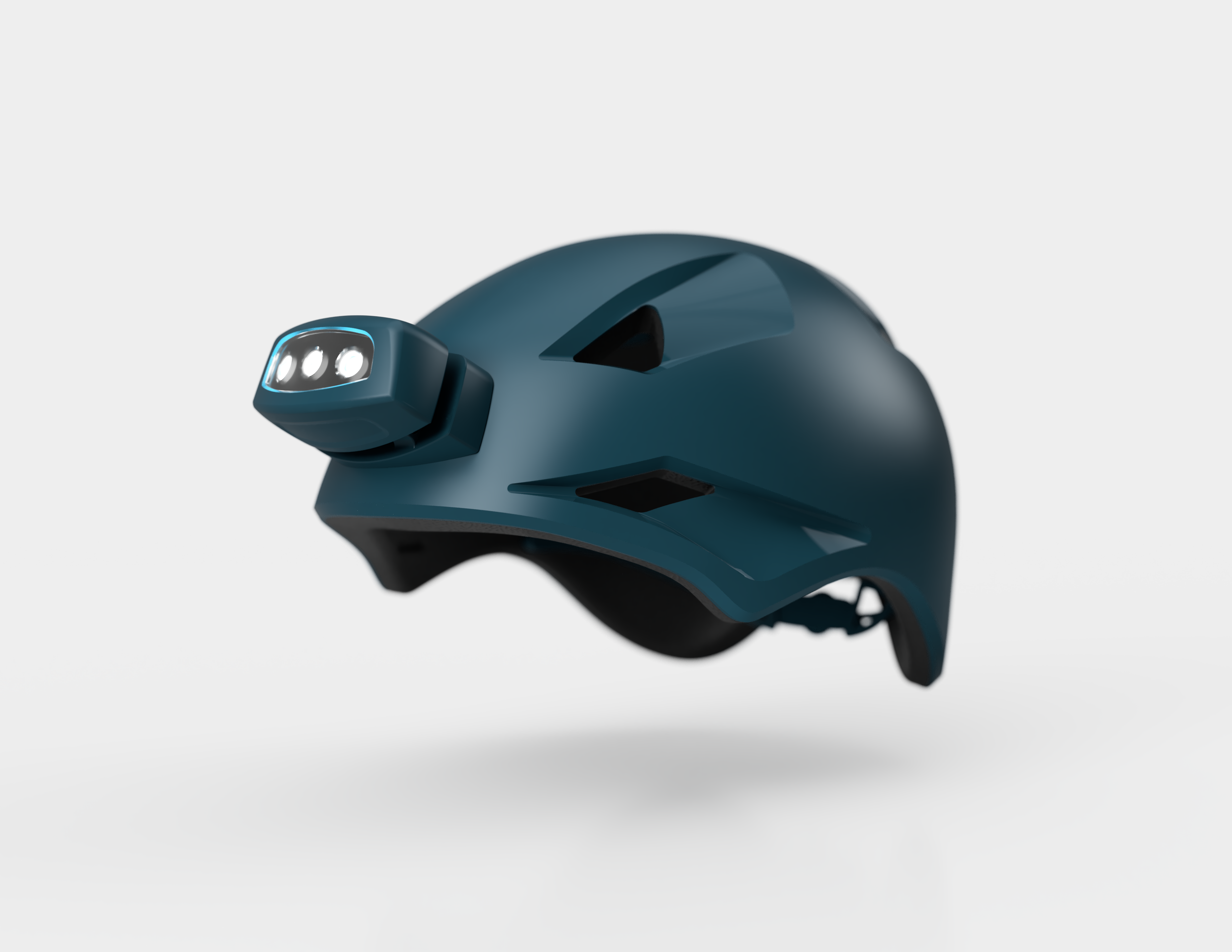
Alpinight,
Senior Thesis (2020/21)
A Desirable Climbing Helmet
Alpinight is a personal protection and integrative lighting system that aims to simplify gear and weight management while optimizing the multi-pitch climbing experience. Beyond mere utility, Alpinight's aesthetics aim to incentivize the safer and more responsible climbing habit of wearing a helmet. As a designer and climber, I saw the need for a product that promotes safe climbing, while giving climbers a sense of confidence both on and off the wall. Thus, my approach to designing Alpinight was to curb some of the stigmas around helmets by creating a product that climbers would want to wear. The Alpinight helmet features a sleek, minimalist design that instills confidence in the climber without drawing unnecessary attention. Its strategically positioned vents and adjustable fitting system ensure maximum comfort with extended use. The Alpinight headlamp features a similarly minimalist design, that visually and functionally merges with the Alpinight helmet. The headlamp features a one-handed and blind connection through a magnetic attachment system. This mechanism enables reliable lighting on the wall, as well as off when it is removed from the helmet and attached to another accessory mount.
Research
-
Rock climbing is a highly nuanced and multi-faceted sport that has seen a surge in popularity over the last few years. As climbing gyms and crags adapt to this influx of activity, climbing-related products should similarly evolve to maintain a safe and responsible experience for climbers of all backgrounds. In my quest to create a protective helmet that anticipates the numerous demands of rock climbing, I unpacked the rationale that leads climbers to avoid the use of helmets, investigated existing efforts to increase helmet use, explored the concept of user-centric design within the outdoor industry, researched industry methods of helmet manufacture and design, dissected lighting science, and applied wearable design principles to the creation of my integrative project.
-
Climbing outside is an inherently dangerous activity, given the unpredictable context in which the activity takes place, yet many climbers forgo the use of helmets. A study found that between 2009 and 2018, there were 129 documented cases of head and neck injuries sustained from rock climbing, proportionately correlating with an estimated 5067 individuals who sustained a total of 6310 head or neck injuries while climbing in the United States (Chou et. al 2). Of the patients that reported to an emergency department, only 2.3% were on record as wearing a helmet when injured (Chou et. al 3). This documented aversion to helmet use can be attributed to the conflicting nature of social acceptance, self-expression, and conformity within extreme-sports cultures (May and Schofield-Tomschin 90–96; Dean and Bundon 1–16).
-
S. Christian Wheeler and Christopher J. Bechler discuss how objects can function as manifestations of our identities through evaluative linkages and connotative linkages. At the most foundational level, objects can reflect our moral values or implicit preferences through physical characteristics that symbolize these beliefs. Evaluative linkages, which refer to an individual’s positive or negative impression of an object, are strengthened when an individual can more closely associate themselves with an object. Moreover, when people can closely associate themselves with an object, their overall impression of the object is likely more positive. Connotative linkages refer to the shared characteristics between an individual and an object that enable a personal connection. When objects can effectively communicate their embodied values to multiple people, they can serve as personal signals of identity; this however hinges upon a mutual understanding of the relevant connotations and context between the object’s owner, and the object’s audience. With this in mind, it is up to helmet designers to address consumers’ functional, expressive, aesthetic, and regulatory needs to foster stronger evaluative and connotative linkages between climbers and helmets.
-
Seeing as though current climbing helmets aren’t satisfying user’s needs, I turned to other technologies that have been embraced by the climbing community. Author Paul Barratt observes that successful climbing-related technologies allow hybridity to exist between a climber and their gear by supporting the user unobtrusively or subtly (Barratt 398–409; Mencarini et. Al 26–43). In layman’s terms, climbers don’t want to feel like they are cheating during the ascent of a route; they instead desire products that, yes, push the boundaries of what is “climbable” but in a way that requires a great deal of finesse and dedication to fully utilize. The wearable headlamp is a great example of this kind of product—it is only performance enhancing for those who are fastidious enough to sacrifice their sleep schedule or dare descend into unexplored caverns. Concerning the concept of techno-physical hybridity, headlamps are an extension of the user in that they are controlled by and move with the user’s body. This utility is however compromised by the inadequate fastening systems that are currently the industry standard. Similarly, headlamp integration in current climbing helmets is quite rare and lacks security. My brief investigation into snap-fit joinery leads me to believe that a more secure unification of the two products is achievable.
From this research, I was reaffirmed that the merger of a climbing helmet and a wearable headlamp could result in a more desirable piece of safety equipment, but only with careful attention to the pitfalls of each product. Thus, I decided to emphasize catering to climbers' aesthetic preferences and holistic outdoor experiences to create a safer climbing environment. To achieve this, I subsequently created a survey in which participants communicated their functional, expressive, and aesthetic needs in a climbing helmet, in addition to providing feedback on my initial helmet sketches. In reaching out to the climbing community, I have received support for perusing this project, in addition to being provided with design direction, and other functional considerations that I wouldn’t have otherwise conceived.
Precedence & User Research
This first step of the design process consisted mainly of precedence research in the form of mood boards, market research, and user research through surveys and personas.
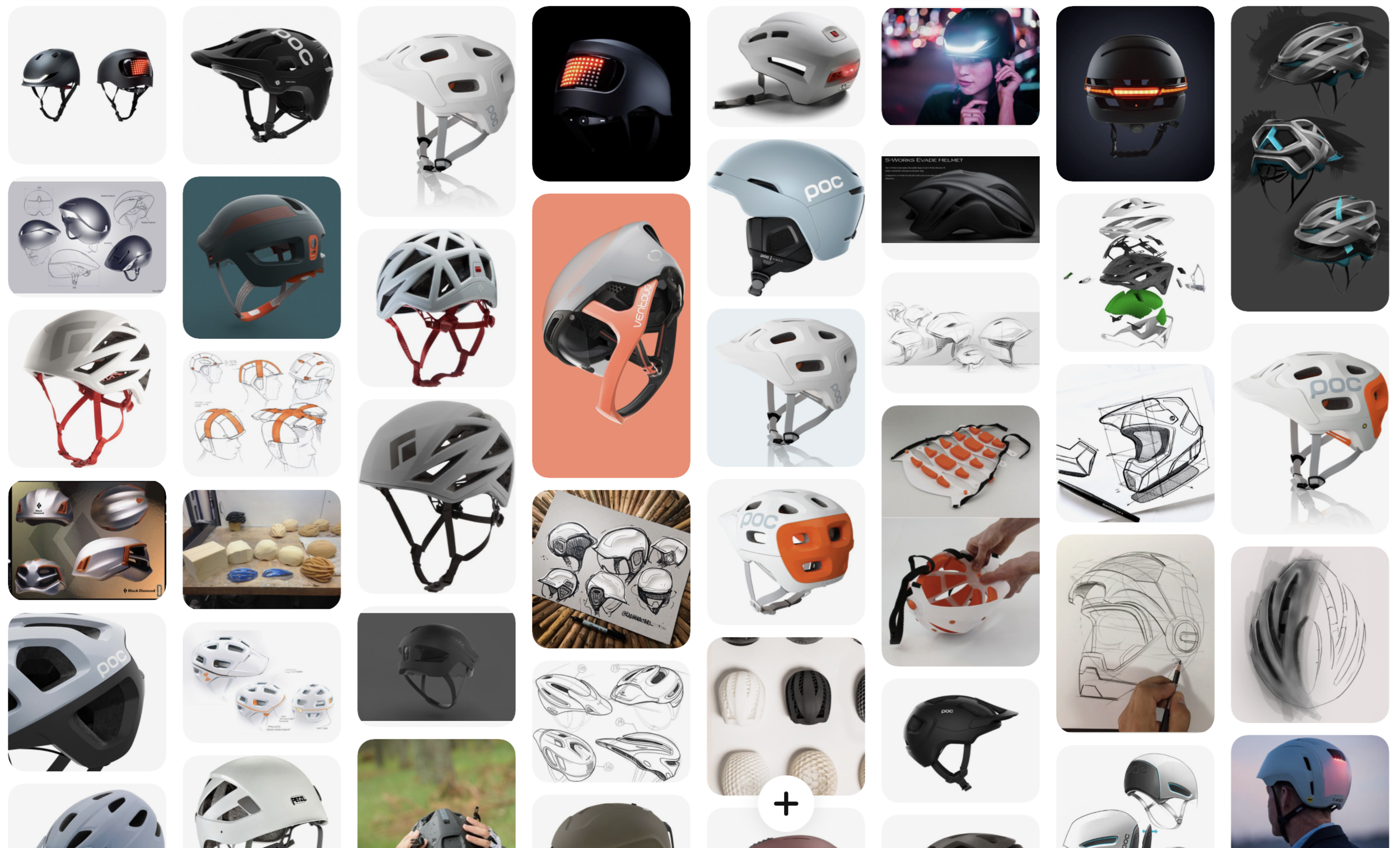
Ideation
I referenced regulatory head-form sketches and suggested material thicknesses to create a template from which I could rapidly ideate helmet silhouettes. This process would ensure that my design sketches were consistent with the regulatory and safety requirements placed on climbing helmets, in addition to allowing my sketches to be easily translated from paper to CAD software. After refining the preliminary helmet concepts in Adobe Illustrator, I created a survey to analyze climbers’ functional, expressive, and aesthetic needs in a helmet, and to receive feedback on the success of my preliminary silhouettes (with these principles in mind). This survey format was inspired by Investigation of Design Characteristics and Regulatory Requirements for Snowboarding Helmets by May Chay and Sherry Schofield-Tomschin.
Iteration
After receiving feedback from the first survey, I created orthographic sketches of the four most popular helmet designs. I was able to similarly solicit feedback from the climbing community on these four developed concepts. This last round of feedback provided me with enough design direction to begin developing a singular helmet concept. I used a variety of techniques, technologies, and mediums to further develop the helmet and headlamp designs: I primarily relied on Fusion360 for surface modeling, clay sculpting and digital sketching for ventilation design, and 3D printing to evaluate designs in a physical format.
